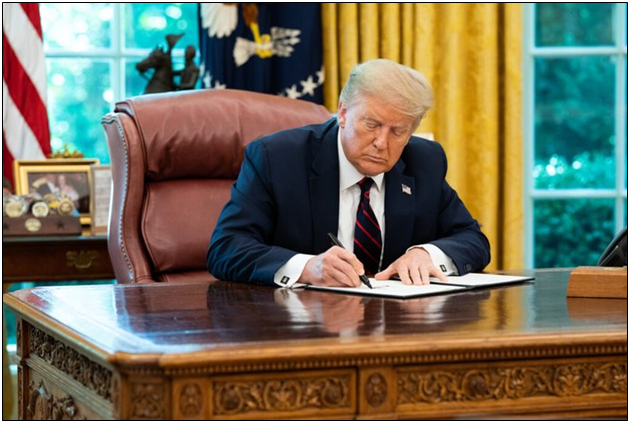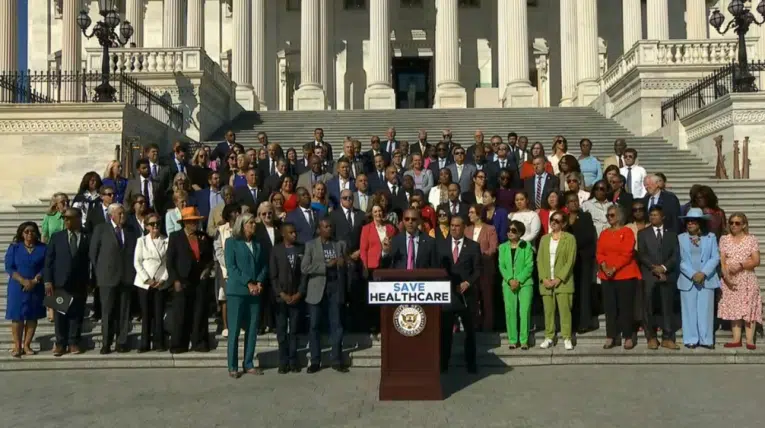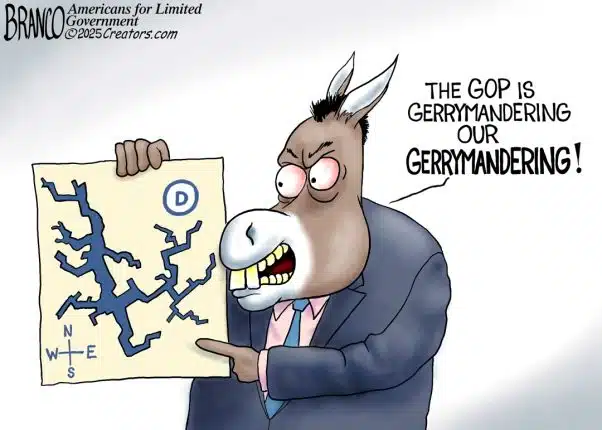President Donald Trump has issued an executive memorandum to Secretary of Commerce Wilbur Ross to discount illegal aliens who are subject to legal removal from the U.S. Census.
Here, the President is invoking the Fourteenth Amendment, Section 2 of the Constitution, which states, “Representatives shall be apportioned among the several states according to their respective numbers, counting the whole number of persons in each state, excluding Indians not taxed.”
From the President’s memorandum: “The Constitution does not specifically define which persons must be included in the apportionment base. Although the Constitution requires the ‘persons in each State, excluding Indians not taxed,’ to be enumerated in the census, that requirement has never been understood to include in the apportionment base every individual physically present within a State’s boundaries at the time of the census. Instead, the term ‘persons in each State’ has been interpreted to mean that only the ‘inhabitants’ of each State should be included.”
So, who are the inhabitants of each state? The President’s memorandum says it “requires the exercise of judgment. For example, aliens who are only temporarily in the United States, such as for business or tourism, and certain foreign diplomatic personnel are ‘persons’ who have been excluded from the apportionment base in past censuses.”
Which, raises the question, if tourists — whose travel visas have certain expiration dates — can and have been excluded from the Census, then why not illegal immigrants who are subject to removal upon discovery by federal authorities?
In Burns v. Richardson (1966) the Supreme Court held that tourists and other non-permanent residents could be excluded from apportionment in the Hawaii state legislature because “Total population figures may thus constitute a substantially distorted reflection of the distribution of state citizenry,” which would have granted more representatives to Oahu than were owed under the State constitution.
The same can be said of sanctuary states like California, whose own non-legal resident populations skew the Census and award additional seats in the House to that state that would not otherwise be counted if only legal inhabitants were considered. Given that illegal immigrants are not legal residents, they are temporary migrants, they could be treated the same as tourists under the law — at least, that’s what President Trump is saying. The question is whether, like in Burns, who is being counted constitutes a “permissible population base,” in the words of the Court.
Various estimates over the years have stated that anywhere from 11 million to 30 million illegal aliens could be residing in the U.S. but nobody knows for certain. When President Trump attempted to have a question included on the Census on citizenship, the Supreme Court arbitrarily shot it down on June 27, 2019, leaving him to pursue a fallback plan.
Under a July 11, 2019 executive order, Trump instead mandated federal departments and agencies to provide records to the Department of Commerce and the U.S. Census Bureau to compile an accurate counting of citizen, legal resident and illegal alien populations for the 2020 Census — but without a citizenship question on the Census form for households to fill out.
Instead, the Trump executive order requires “All agencies shall promptly provide the Department [of Commerce] the maximum assistance permissible, consistent with law, in determining the number of citizens, non‑citizens, and illegal aliens in the country, including by providing any access that the Department may request to administrative records that may be useful in accomplishing that objective.”
In addition, the order specifically requires the following records to be furnished to the Census: “National-level file of Lawful Permanent Residents, Naturalizations” from the Department of Homeland Security (DHS) and the United States Citizenship and Immigration Services, “F1 & M1 Nonimmigrant Visas” from DHS and Immigration and Customs Enforcement, “National-level file of Customs and Border Arrival/Departure transaction data” from DHS, “Refugee and Asylum visas” from DHS and Department of State, Worldwide Refugee and Asylum Processing System, “National-level passport application data” from State, “Master Beneficiary Records” from the Social Security Administration and “CMS Medicaid and CHIP Information System” from the Department of Health and Human Services.
Now, Trump’s move to block illegal aliens from being counted will surely be tried against the Evenwel v. Abbott (2016) Supreme Court decision that held “As constitutional history, precedent, and practice demonstrate, a State or locality may draw its legislative districts based on total population.” Then, plaintiffs were objecting to Texas’ plan to count the total population including non-citizens, both legal and illegal, given in the Census toward legislative districts. The Supreme Court unanimously held in Texas’ favor.
And while that may seem like it might preclude what Trump is trying to do here, the question is slightly different, which is what constitutes the “total population” in each state. Is it the number persons who happen to be in each state at the time of the Census’ taking? Or the number of inhabitants, as Trump suggests? And who decides who is an inhabitant?
Here, Trump shows that past presidents have made the ultimate determination, excluding tourists and also sometimes excluding overseas military personnel and sometimes including them.
From the memorandum, “the Constitution also has never been understood to exclude every person who is not physically ‘in’ a State at the time of the census. For example, overseas Federal personnel have, at various times, been included in and excluded from the populations of the States in which they maintained their homes of record. The discretion delegated to the executive branch to determine who qualifies as an ‘inhabitant’ includes authority to exclude from the apportionment base aliens who are not in a lawful immigration status.”
So, Trump wishes to separate out citizens and legal residents from those here either on temporary visas or are here illegally. That’s different from what the Supreme Court decided in 2016.
The case is stronger than you think. If persons with temporary travel visas have been excluded constitutionally in past Censuses, then why should persons who overstay those travel visas be included? The same can be said for illegal aliens subject to deportation who never had a visa to begin with. If tourists and visa overstayers aren’t included, then neither should illegal aliens be included.
Robert Romano is the Vice President of Public Policy at Americans for Limited Government.







